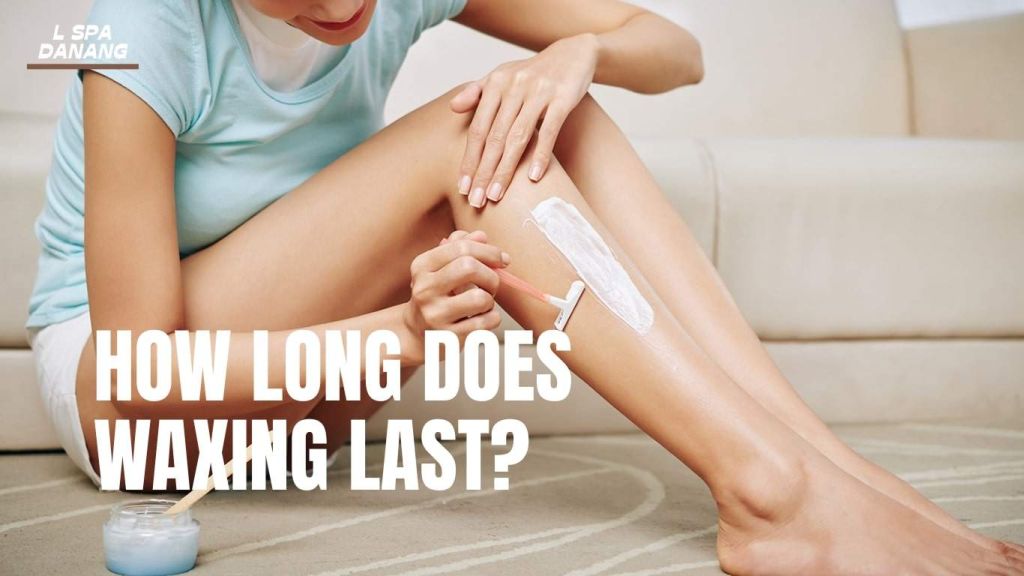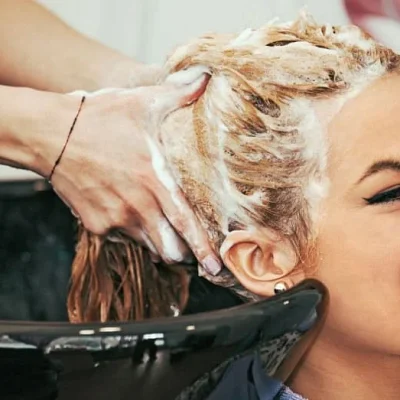Hair removal is a common practice for many individuals, and choosing the right method can significantly affect the results and duration of hair-free skin. Among the various techniques available, waxing is one of the most popular options. In this blog post, Diva Salon helps explore the longevity of waxing compared to other hair removal methods, delving into the benefits and drawbacks of each.
Understanding Waxing

Waxing involves applying a warm or cold wax to the skin, which adheres to the hair. A cloth strip is then used to pull the wax away, removing the hair from the follicle. This method is commonly used for various body parts, including legs, arms, underarms, and the bikini area. The primary advantage of waxing is that it removes hair from the root, which can lead to a smoother finish and longer-lasting results compared to shaving.
Waxing is a popular hair removal technique that involves applying a thin layer of wax to the skin and quickly removing it, pulling hair from the root. This method can leave skin smooth for weeks, making it ideal for various areas, including legs, arms, and facial hair. Regular waxing can also reduce hair growth over time. For those seeking professional results, waxing services offer expertise and convenience, ensuring a comfortable experience and effective hair removal tailored to individual needs.
How Long Does Waxing Last?
The results of waxing can last anywhere from three to six weeks, depending on several factors such as hair type, growth cycle, and the area being treated. Generally, hair grows in cycles, and the timing of waxing can be crucial. For most people, regular waxing sessions can help reduce hair growth over time, making hair finer and sparser. With consistent waxing, many individuals find that they experience longer periods between sessions.
Waxing Versus Shaving
Shaving is one of the most common hair removal methods due to its convenience and speed. However, the results from shaving are short-lived, typically lasting only a few days to a week. Shaving cuts hair at the surface of the skin, which means it does not affect the hair follicle. As a result, regrowth occurs quickly, and many individuals may find themselves shaving every few days to maintain smooth skin.
One significant drawback of shaving is the risk of irritation, cuts, and razor burn. Over time, frequent shaving can lead to thicker hair regrowth due to irritation and damage to the hair follicle. This contrasts with waxing, which, as mentioned, removes hair from the root and can lead to finer regrowth.
Waxing Versus Depilatory Creams
Depilatory creams are chemical-based products designed to dissolve hair at the surface level. While these creams can provide smooth skin, their results typically last about one to two weeks. Like shaving, depilatory creams do not remove hair from the follicle, resulting in quicker regrowth.
The duration of results from depilatory creams can also depend on skin sensitivity. Some individuals may experience irritation, redness, or allergic reactions to the chemicals in these creams. In contrast, waxing, while it may cause temporary redness or irritation, often leads to longer-lasting results without the risks associated with harsh chemicals.
Waxing Versus Laser Hair Removal
Laser hair removal is a more permanent solution compared to waxing. This method uses concentrated light beams to target and destroy hair follicles, significantly reducing hair growth over time. While laser hair removal can provide long-lasting results, it typically requires multiple sessions to achieve optimal results.
The initial investment in laser hair removal is generally higher than waxing, as each session can be costly. However, many individuals find that after completing a series of treatments, they experience a significant reduction in hair regrowth, sometimes leading to permanent hair removal. In terms of duration, while waxing provides results that last a few weeks, laser hair removal can lead to months or even years of hair-free skin. It is essential to consider individual hair growth cycles and skin types, as results can vary.
Waxing and laser hair removal are popular methods for hair removal, each with distinct benefits. Waxing offers immediate results, effectively removing hair from the root, but requires regular maintenance every few weeks. In contrast, laser hair removal provides a more permanent solution by targeting hair follicles with light energy, leading to long-term reduction over multiple sessions. While waxing can be more accessible, laser treatment may ultimately save time and money. Both methods are essential considerations for anyone exploring hair services.
Waxing Versus Electrolysis
Electrolysis is another permanent hair removal method that uses electric current to destroy hair follicles. Unlike laser hair removal, which targets multiple hairs simultaneously, electrolysis treats individual hair follicles. This method is FDA-approved for permanent hair removal and can be effective for all skin and hair types.
The longevity of results from electrolysis is similar to that of laser hair removal, as both methods can lead to permanent hair reduction over time. However, electrolysis requires more sessions than waxing, and the process can be time-consuming. While waxing offers quick and efficient results, electrolysis can take several months to years to achieve complete hair removal.
Factors Influencing Waxing Results
Several factors influence how long waxing lasts for individuals. Hair type plays a significant role; coarser hair may take longer to regrow, while finer hair may grow back more quickly. Additionally, the area being waxed affects duration; areas with coarser hair, such as the bikini line, may require more frequent waxing compared to finer hair on the arms.
Hormonal changes can also impact hair growth rates. For instance, women may experience changes in hair growth due to menstrual cycles, pregnancy, or menopause. These hormonal fluctuations can affect how quickly hair regrows after waxing.
Preparing for a Waxing Session
Proper preparation before a waxing session can enhance results and prolong the duration of hair-free skin. It is advisable to exfoliate the skin a day or two before waxing to remove dead skin cells, allowing the wax to adhere better to the hair. Additionally, hair should be of a certain length—typically about a quarter-inch—for effective waxing. Staying hydrated and avoiding sun exposure or tanning products in the days leading up to a waxing session can also improve results. Hydrated skin is less prone to irritation, making the waxing experience more comfortable and effective.
Preparing for a waxing session involves several key steps to ensure the best results and comfort. Start by exfoliating the skin a day before to remove dead cells and minimize ingrown hairs. On the day of the waxing, avoid moisturizing or applying any products to the area being waxed. It’s also a good idea to wear loose-fitting clothing to prevent irritation post-waxing. For those who prefer convenience, many home services now offer professional waxing at your doorstep, allowing you to enjoy a salon-quality experience in the comfort of your home. This personalized service ensures privacy and tailored care.
Post-Waxing Care
After waxing, proper aftercare can significantly influence how long results last. It is essential to avoid hot showers, saunas, and strenuous exercise for at least 24 hours to reduce the risk of irritation. Applying a soothing lotion or aloe vera gel can help calm the skin and prevent redness.
Exfoliating the skin regularly after waxing can prevent ingrown hairs, ensuring a smoother appearance as hair regrows. Waiting for hair to reach the appropriate length before waxing again is crucial for maintaining effective results.
The Psychological Aspect of Hair Removal
The choice of hair removal method can be influenced by personal preferences and cultural factors. Some individuals prefer waxing due to the longer-lasting results, while others may opt for shaving for convenience. Understanding the psychological aspect of hair removal can help individuals choose the method that aligns with their lifestyle and comfort.
Many individuals report feeling more confident and comfortable in their skin when using waxing as a hair removal method. The smoothness achieved through waxing can boost self-esteem, leading to more positive body image and overall well-being.
Cost Comparison of Hair Removal Methods
When comparing the costs of various hair removal methods, waxing is generally more affordable than laser hair removal and electrolysis in the short term. However, it is essential to consider the frequency of sessions required for each method. While waxing may be less expensive per session, the cumulative costs can add up over time.
Investing in laser hair removal or electrolysis can lead to long-term savings, as these methods may reduce or eliminate the need for regular hair removal sessions. Individuals should assess their budgets and hair removal goals when deciding which method to choose.
Environmental Considerations
As individuals become more environmentally conscious, the sustainability of hair removal methods is increasingly under scrutiny. Waxing, especially when using natural wax products, can be a more eco-friendly option compared to depilatory creams and other chemical methods. Additionally, laser hair removal reduces the need for disposable products, which can contribute to waste over time. Considering the environmental impact of hair removal choices is becoming more relevant, and individuals may wish to explore sustainable options to align their grooming habits with their values.
Environmental considerations in makeup services are increasingly important as consumers seek sustainable beauty options. This includes using eco-friendly products, reducing waste through refillable packaging, and opting for cruelty-free brands. Makeup artists can also implement practices such as minimizing single-use items and choosing products with natural ingredients to lessen their ecological footprint. Additionally, promoting local and organic cosmetics can support sustainable farming and reduce transportation emissions. By prioritizing environmental responsibility, makeup services can attract eco-conscious clients and contribute positively to the planet, enhancing both beauty and sustainability in the industry.
FAQs
How long does waxing really last?
After a wax, the hairs that were in the resting phase will begin growing back, and that’s why you’ll see hair regrowth in a matter of weeks but not as thick as before. On average, a wax will last you three to four weeks.
Which waxing method is better?
In conclusion, both hard wax and sugar wax have their unique advantages. Hard wax is excellent for removing thicker hair, while sugar wax is gentler on sensitive skin and causes less pain. Both methods can give you hair-free skin for 4-6 weeks.
What lasts longer than waxing?
The result is not only smoother skin immediately after treatment but also a longer duration before regrowth occurs compared to shaving and potentially waxing. The gentleness of sugaring also means it’s less irritating to the skin, making it suitable for sensitive areas.
What is bad waxing technique?
One of the biggest mistakes professionals or at-home users alike can make is to apply and remove wax in the wrong direction. This can cause skin tearing or lifting for clients.
Who should avoid waxing?
You’re pregnant, taking birth control, hormone substitution, or antibiotics. Your skin might be more sensitive to waxing, best to have a patch test 24 hours before getting waxed. Smokers or those with Rosacea. Waxing can aggravate dilated capillaries which are regular with smokers or individuals with Rosacea.
Conclusion
Waxing is a popular hair removal method known for its long-lasting results, typically lasting three to six weeks. When compared to other methods like shaving, depilatory creams, laser hair removal, and electrolysis, waxing provides a balance of affordability and effectiveness. While waxing may require regular sessions, the benefits of smoother skin and finer hair regrowth can make it a worthwhile investment for many individuals.
Ultimately, the choice of hair removal method depends on personal preferences, budget, and desired results. Understanding the differences in longevity, costs, and skin care can help individuals make informed decisions that align with their grooming needs. Whether one opts for waxing, shaving, or more permanent solutions like laser hair removal, each method offers unique advantages and challenges that can cater to individual lifestyles and preferences.




